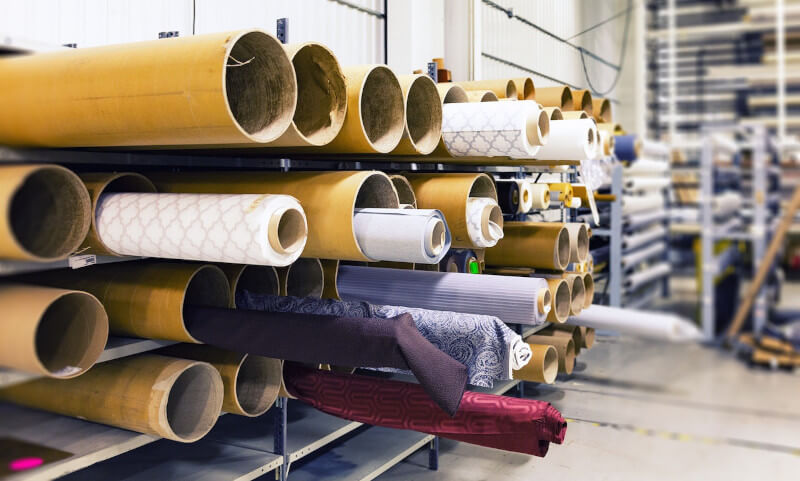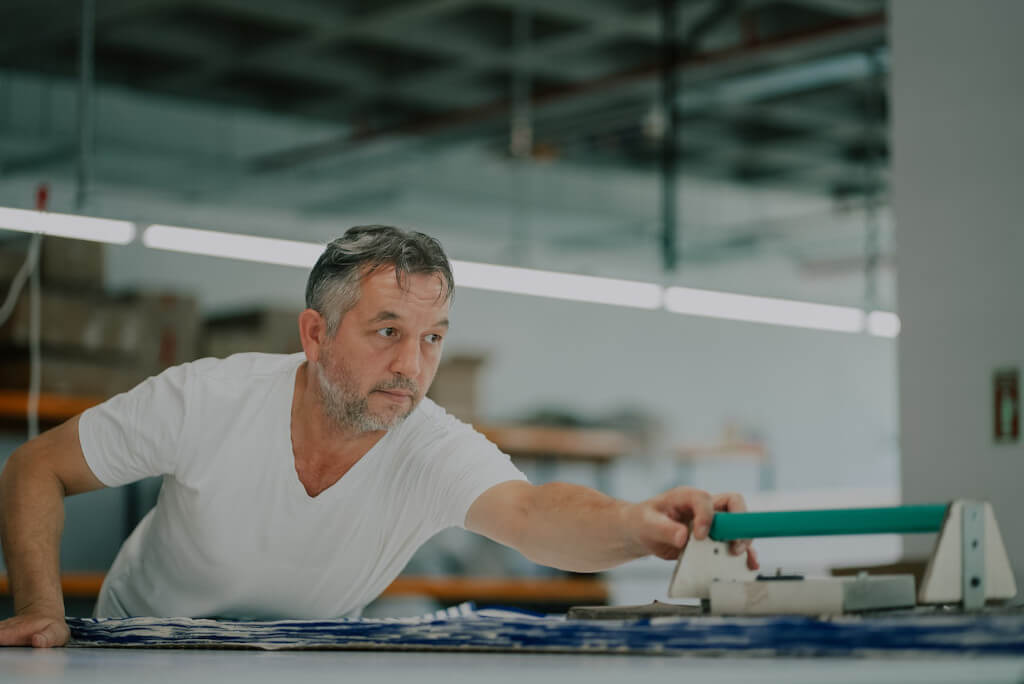The entire textile landscape is transforming as a result of innovations such as smart fabrics and 3D printed clothing, as well as increased demand from the hygiene industry and environmentally friendly textiles. The textile industry is no longer the same as it was just a few years ago. In light of this fact, influential textile industrial equipment associations from Europe discuss their views on how the industry is adapting to the changes, the most advanced equipment and developments in the industry, as well as the prospects for the industry going forward.
The Garment Industry presents a Lot of Difficult Challenges
The innovative products that have been produced are all the result of a partnership between textile firms and the technology companies that serve the textile industry. The inventiveness of both industries, as well as the synergy between them, results in the creation of new products and new software for textiles. Therefore, Italian textile machinery manufacturers are prepared for the challenges that lie ahead as a result of their ability to collaborate daily with their customers and provide them with technical solutions that can produce products that are ever more innovative.
The Newest Innovations
At the upcoming exhibition of the International Textile Machinery Association (ITMA), which will take place in Milan, all of this cutting-edge machinery and cutting-edge technology will be displayed for attendees to see. It is the event that manufacturers of textile machinery have been waiting for in their entirety.
However, technological advancements and disruptions have required the majority of new innovators to keep their feet on the ground and seize opportunities that they find outside of the show. At its 19th exhibition in Milan, the International Textile and Apparel Machinery Exhibition (ITMA) will keep showcasing and sharing innovative production materials and technologies with the industry. ITMA is the world’s biggest textile and clothing technology showcase in the world.
Despite this, they are unable to afford to attend the ITMA show, which not only brings together the most successful equipment-making corporates but also the most influential equipment purchasers of textile equipment from all over the world. They planned to demonstrate their newly developed innovative technologies, which improve the environmental friendliness of processes and products and advance digitization efforts.
At the show, there would be brand-new pieces of machinery. Although Europe may have fallen behind emerging economies in terms of apparel production, the continent maintains its position as the leader when it comes to the production of textile machinery. It is common knowledge that Germany, Switzerland, and Italy are the industry leaders when it comes to the production of high-quality fabric machinery for the complete textile value chain.
Functional, Environmentally Responsible, and Mechanized
The sector of woven narrow fabrics is moving toward a focus on operability and sustainability as the dominant trends. These tenets have already been embraced by the Jakob Müller Group, as evidenced by their use of natural fibers for labels that are 100 percent recyclable and have a selvage that has a velvety texture. Additionally, it places an emphasis, to the greatest extent that is practicable, on the sorting of recycled man-made materials. The recycling and processing of PET bottles and waste polyester from production results in the creation of elastic and restrictive tapes for use in the apparel industry.
It is now common knowledge that automated quality control solutions are an absolute necessity in settings designed for the effective production of fabrics. All over the world, quality standards are getting higher, and reaching zero defects in critical applications like airbags and protective gear is becoming increasingly obligatory.
Weavers can experience significant efficiency gains thanks to the most recent generation of on-loom surveillance and audit systems manufactured by Uster. The fabric quality monitoring helps to eliminate waste, while the quality assurance process significantly boosts the proportion of finished products that are of first quality across all applications. Automated fabric inspection eliminates the need for slower, more expensive, and less credible manual analysis, freeing up operators to concentrate on more complex jobs while protecting fabric manufacturers from costly statements and reputation loss. This protects fabric manufacturers from costly claims and protects their reputations.
In weaving rooms, there are numerous automation opportunities made available by smart and collaborative robots (cobots). The future-oriented robotics division of Staubli is a driver in this market with the first effective implementations in the preparation of warp and creel.
The Evolution of Digital Technology
The digital ready certification is an idea that was developed by ACIMIT. It is a strategic instrument that was intended to optimize the production chain by implementing an appropriate vocabulary and distinct data reading method that allows various kinds of equipment to connect with their respective production system. This means that the customers will have the chance to i) further facilitate and swiftly incorporate ii) the estimation and analysis of production KPI, iii) control the entire product life cycle, and iv) the chance to make better business decisions.
Long Term Growth
In the not-too-distant future, the majority of the expansion will come from technologically advanced textiles in industries such as automotive, fabrication, and medical. As a result of the growing negative effects that the textile industry has on the surrounding environment, also there will be a growth of products that come from the recycling process. In conclusion, we believe there will be an expansion in the nonwoven industry as well, particularly regarding disposable items for basic hygiene and the medical industry.
The Swiss Textile Machinery Association is the entity that acts as a representative for the manufacturers of textile machines, elements, and services that are located in Switzerland. At the moment, 43 businesses are associated, which may not sound like a very large number, but the Swiss companies propose alternatives that encompass the entire textile value chain.
These solutions include weaving, finishing, nonwoven, stitching, and quality management. They have a combined heritage of over 4,000 years of experience in the textile machinery, components, and services industry, which provides an excellent foundation for meeting the challenges that the global industry presents.
Trends In the Industry
A disproportionate amount of the rise in textile production can be attributed to the fact that the buying power of the world’s population is growing each year. Long into the future, sustainable growth and a circular economy will remain two of the most significant challenges. One of the most important aspects of sustainability is making the most out of available resources by maximizing their utilization. Raw materials are in short supply, water is a precious commodity, and the cost of energy is high. Therefore, it is of the utmost importance that tools and solutions become more effective in every respect.

The European Union has initiated a strategy for environmentally friendly textiles, and Swiss businesses have taken it upon themselves to embrace the objectives of this initiative. The Swiss Textile Machinery Association has put “sustainability” at the very top of its list of priorities and is in the process of developing an individualized program for each of its member businesses. Although some member companies are already quite developed in this area, there is no doubt that others will be able to benefit from this.
The Swiss have a more than the 4,000-year-old heritage of expertise in the machinery, components, and services associated with the textile industry. They are well prepared for the emerging world’s inventive challenges thanks to their experience and equipment. The textile value chain is covered in its entirety by the solutions provided by Swiss companies, beginning with spinning and winding and continuing through weaving, needlework, finishing, non-woven, stitching, and quality management.
The utilization of data presents several opportunities, including the optimization of products or processes and the creation of entirely new business models. Swiss textile machinery firms create the most of these opportunities to maximize the benefits for their customers and assist their business partners in making the switch to industrial automation. The textile machinery industry in Switzerland currently holds a dominant stance in the high-quality subsegment of special equipment and materials of the highest quality.
There Is a Past for the Future
Within the next five to ten years, what do you see the members of the Swiss Textile Machinery Association doing? The year 1940 serves as a point of departure for a look into the future. The difficulties in obtaining materials of non-ferrous metal alloys and high-quality steel caused the figureheads of the textile machinery industry in Switzerland to become deeply concerned about their businesses’ ability to continue operating normally at the time.
As a result, 22 different businesses came together to form the very first textile equipment group. There have been several periods throughout the years in which the industry has been faced with a great deal of difficulty. This is because other crises and downturns in the global economy of levels of severity have followed one another one after the other.
During this time, the profile of the global textile sector has also undergone significant shifts. The East and Southeast have long since become the dominant regions for mass production. Despite this, or perhaps as a direct result of it, Swiss textile machinery has established itself as a market leader in the high-quality portion of special materials and equipment of the highest possible standard.
Companies that are members of the consortium have an entrepreneurial spirit, which allows them to anticipate developments and incorporate those developments into new machines and solutions. These are the very characteristics that will ensure the continued competitive advantage of Swiss companies in the years to come.
The growing population and increased purchasing power across the globe have led to an increase in textile consumption, which has, up until this point, been accompanied by an increase in resource consumption. The entire chain consists of various parties, including consumers, retailers, brands, and producers of textiles.
Within this context, the businesses that are organized under the auspices of the VDMA Textile Machinery Association are pleased with the global aspirations to promote climate protection. They are geared toward achieving a resource-efficient textile production system as well as a functioning circular economy. We are an invaluable partner in the process of this transition thanks to the highly effective technologies that we have developed.
Production of Power and Composite Materials
Modern wind generators are responsible for producing an increasing portion of the electricity that is consumed in Germany and other countries. These generators have rotor blades that are made out of composite materials. In the processing of fiber-reinforced composites, German textile equipment such as warp knitting machines, braiding machines, and other similar devices are utilized. Therefore, advancements in the fabric processing industry serve as the springboard for the development of intelligent applications and goods. Therefore, advancements in the textile machinery industry serve as the springboard for the development of intelligent applications and goods.
The efficiency of Energy Use in the Textile Industry
The production of energy is one important aspect, and the conservation of energy is another. An expert team consisting of companies that are members of the VDMA Textile Machinery Association has researched the effects of energy savings across the entire production chain of five different textile products. These five textile products include a cotton T-shirt, an operational T-shirt, a textile banner, an architectural fabric, and a hygienic non-woven.
The conclusion drawn from this study is that the technologies used by VDMA member companies today, when applied to the production of these goods, can result in energy savings of up to 30 percent when compared to those that were accessible 10 to 15 years ago. Therefore, there has already been significant progress made in terms of energy efficiency. The same can be said for essential resources such as water or natural resources like cotton.
Manufacturing processes that are efficient with energy and resources can be achieved in large part through the optimization of machines, components, and technologies. The textile manufacturing sector is seeing significant shifts toward both environmentally conscious practices and increased automation.
Remote Services to Prevent Unscheduled Machine Downtime
The textile industry is characterized by a growing level of automation as well as the use of remote services. Companies that are members of the VDMA that serve these marketplaces see themselves not only as providers of machines but also as skilled partners in the technical capabilities of digitalization and the processes of their customers. The key to continued success lies in cultivating strong connections between various technology providers, including spinners, weavers, knitters, or finishers, as well as suppliers of machines, chemistry, and other types of technology.
Numerous VDMA textile technology suppliers now offer assistance to their customers in the form of remote services/teleservice as well as predictive maintenance software to reduce the number of machine stoppages. Digitalization and Industry 4.0 also help to combat the growing shortage of qualified workers, and the machines produced by many VDMA companies offer a wide variety of helpful features to guarantee that the quality of the results can be reproduced accurately. They include simulation of the process on a personal computer so that the process parameters can be optimized before production even begins.
Overall, 2 components make up resource and energy conservation, and they are process optimization and the implementation of cutting-edge plant technology. Consumption of energy, water, and chemicals, as well as the waste of high-cost raw materials, are all being significantly cut back thanks to the innovative machine concepts and control systems that are at the heart of today’s cutting-edge manufacturing. When compared to earlier models, the use of technologically advanced machinery results in a significant decrease in the footprint left on the environment.
Spinning Results in Less Waste During Production and Lower Overall Energy Usage
When it comes to spinning, some of the most significant concerns for modern mill management include inefficiencies, interruptions in mill production, and variations in quality. A digital solution that is all-in-one and offered by one of the member companies offers a clear view of the whole spinning mill at a glance, which helps to address the issues that have been raised.
Users of the platform are given the ability to discover areas of potential optimization and intelligently strategize resources. Diagrams of quality offer data on important progress parameters, including thick spots, CV values, draft variation, and energy consumption, among other things. The users can quickly spot negative variances and outliers, and as a result, they are in a position to avoid the manufacturing of material that is not usable by intervening in the process as necessary. This leads to less waste during production as well as lower levels of energy consumption.
Using AI to Detect Defects in the Fabric
Artificial intelligence (AI) is expected to play a significant role in the future of the fabric manufacturing industry. A company that is a member of the VDMA is currently working on a solution that has the potential to smartly identify fabric faults during the manufacturing of textile fibers by automatically monitoring the quality of the finished product and immediately stopping the machine.
Because it makes use of AI, the surveillance system can detect issues much more quickly and with greater precision. The incredibly rapid response times result in less resource consumption and waste prevention. In the field of flat knitting, software, when used in conjunction with the third-party operating system for 3D prototyping, enables the creative process to be digitized and, as a result, decreases the number of prototypes that need to be created.
Under the predetermined conditions of the company’s case study, a reduction by half was accomplished. Around sixty-five percent less resource intake and correspondingly lower demand for resources and energy are two of the environmental benefits that this will bring about.
When It Comes to Braiding, the Machines Determine Both the Cost Savings and the Quality of the Finished Product
The advancements that have been made in machine technology have helped to optimize both the costs and the sustainability of life cycles. The use of fewer fibers to achieve a higher strength can be achieved by using braiding equipment that guarantees consistent tension and creates defined strands through the use of back twists. Because of this, the carbon footprint of each product, in conjunction with the reduction in the number of fibers that are required, gets smaller.





